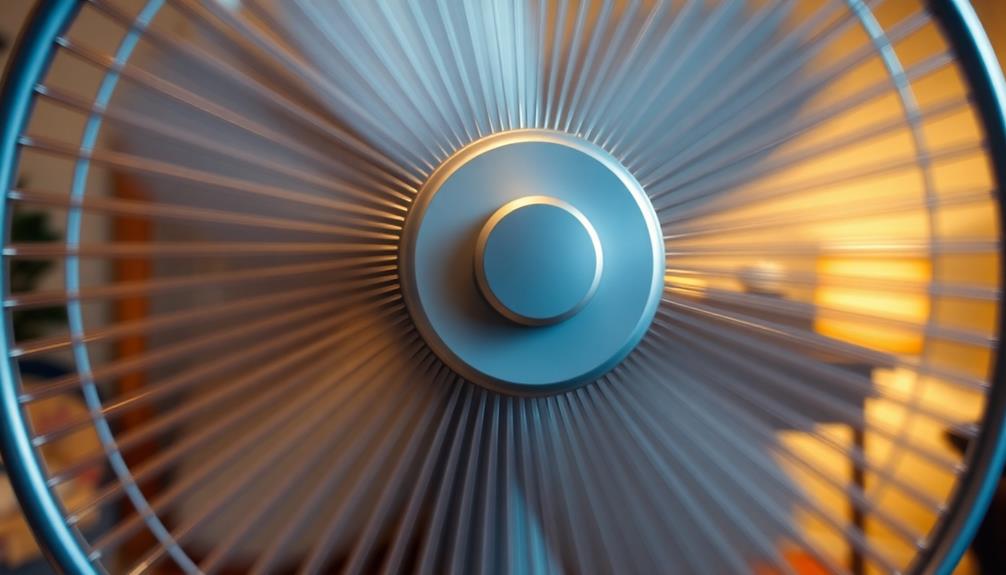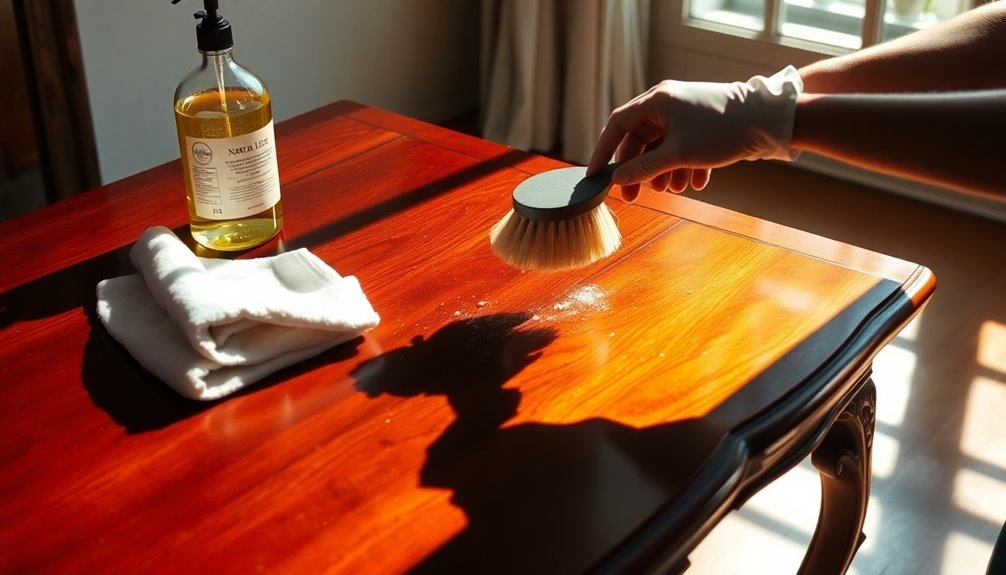If your fan's spinning backwards, it could be due to wiring issues or a misconfigured reversing switch. Check your wiring connections first; loose or incorrect placements can cause performance problems. Next, verify that the reversing switch is set correctly for the season. If those look good, inspect the motor and capacitor for any faults that may disrupt normal operation. A regular maintenance routine will also keep your fan functioning smoothly. Understanding how these elements work together is key to resolving the issue, so stick around to uncover more insights on keeping your fan in top shape.
Key Takeaways
- Incorrect wiring connections can cause the fan to spin backwards; ensure all connections are secure and properly placed.
- The reversing switch may be misconfigured; check its position to ensure it is set for the desired airflow direction.
- Faulty motor capacitors can lead to improper rotation; inspect and replace any defective components to restore correct spinning.
- Blade pitch and alignment should match manufacturer guidelines; misalignment can affect airflow and cause reverse spinning.
- Regular maintenance, including cleaning and lubrication, helps prevent issues that may lead to backward spinning of the fan.
Understanding Fan Operation
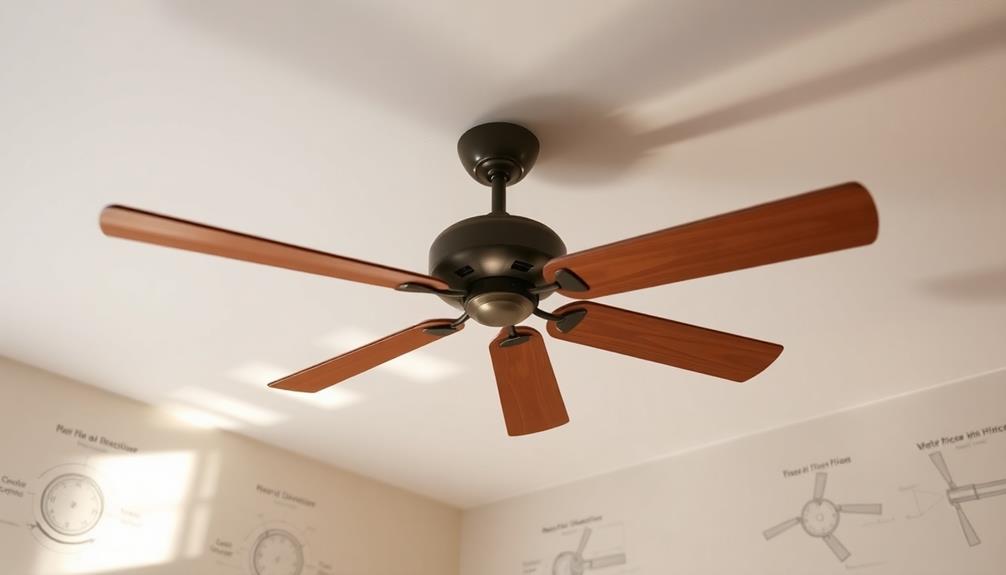
When you adjust your fan, understanding its operation is key to maximizing comfort. The direction of your fan blades plays an essential role in how air flows throughout your space.
If your fan spins clockwise, it creates a downward airflow, which feels invigorating during hot weather. Conversely, a counterclockwise rotation pushes air upwards, circulating warmth during colder months. This upward airflow helps distribute heated air evenly from the ceiling, enhancing comfort.
Many fans come equipped with a switch that allows you to change blade direction easily. Regular maintenance, like cleaning the blades and checking for wear, guarantees your fan operates effectively, allowing you to enjoy peak airflow and comfort year-round.
Wiring and Electrical Connections
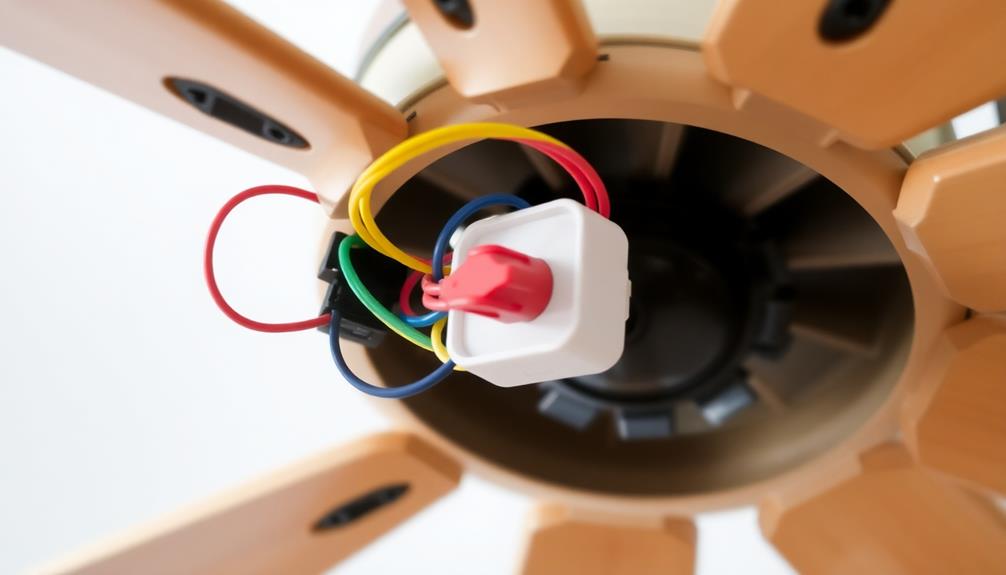
Understanding how to wire your fan properly is vital for ensuring it operates correctly and efficiently. Incorrect wiring connections can lead to your fan spinning backward or malfunctioning entirely. Always refer to the manufacturer's instructions for accurate wire placement.
Loose or improperly connected wires disrupt the electrical current, causing performance issues. Make sure to double-check all connections to prevent installation errors.
Additionally, inspect the fan motor for the correct voltage; low voltage can also cause reverse spinning. Regularly checking wiring connections for looseness or faults is essential since these can greatly affect the fan's rotation direction.
Reversing Switch Functionality

The reversing switch is an essential component for controlling your fan's direction. You can easily change the airflow in your space by flipping this switch.
Typically located on the fan's motor housing or accessible via a remote control, it's vital to guarantee it's functioning properly. If the switch is misconfigured or broken, your fan might spin backwards, disrupting its intended airflow pattern.
Positioning the switch correctly allows you to optimize your fan for summer cooling or winter warmth. Be mindful of the switch's placement and operation; a faulty switch can lead to performance issues.
Regularly checking the switch can help maintain your fan's effectiveness and keep your environment comfortable year-round.
Troubleshooting Common Issues
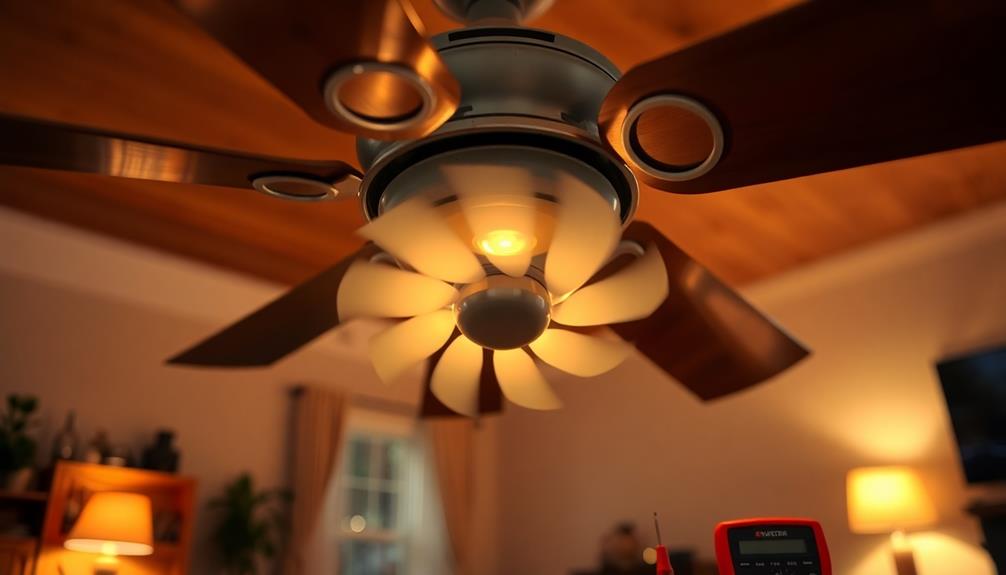
If your fan isn't performing as expected, troubleshooting common issues can help restore proper function.
Start by checking the wiring connections; loose or improperly connected wires can disrupt the electrical current, causing backward spinning.
Verify that the reversing switch is set correctly, as misplacement can lead to performance problems.
Inspect the motor capacitor; if it's faulty, it may cause improper rotation.
Also, look at the fan blade pitch and alignment, adjusting as per the manufacturer's guidelines.
If the fan isn't spinning at all, there might be a mechanical issue requiring attention.
Regular inspections and prompt repairs can prevent complications, confirming your fan operates efficiently and effectively.
Maintenance Best Practices
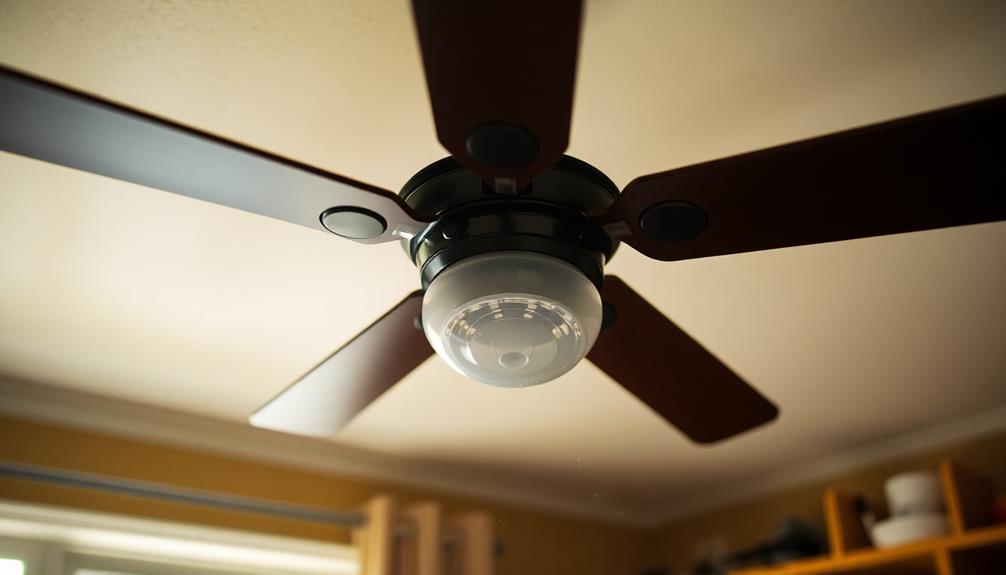
Regular maintenance is key to guaranteeing your fan operates at peak performance and longevity.
By following these best practices, you can prevent issues that might cause your fan to spin backwards or malfunction: By regularly cleaning the fan blades and ensuring they are balanced, you can maintain optimal performance and reduce the risk of operational problems. It’s also crucial to consult the manufacturer’s guidelines for proper installation and maintenance, as these often include essential ceiling fan safety tips. Additionally, always turn off the power supply before performing any adjustments or repairs to protect yourself and the fan’s functionality.
- Clean blades regularly to remove dust and debris for maximum airflow.
- Inspect and tighten screws to prevent loose components that could disrupt operation.
- Check wiring connections to verify they're secure and undamaged.
- Test the reversing switch periodically to confirm it functions correctly.
- Lubricate motor bearings as recommended to reduce friction and wear.
Motor Performance Factors
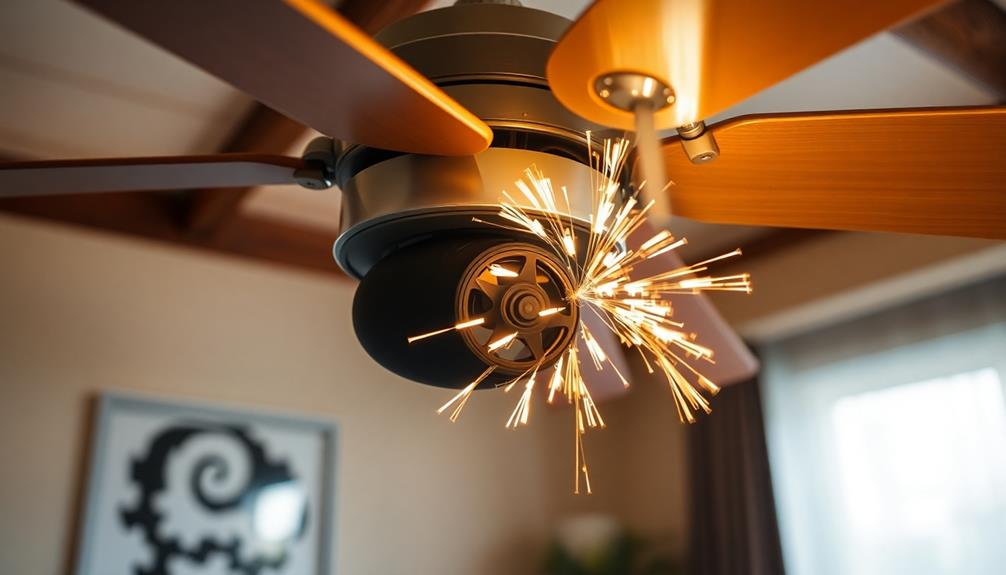
Maintaining your fan is important, but understanding motor performance factors can greatly enhance its operation. The motor is the heart of your fan, controlling its rotation direction.
If you notice your fan spinning backward, faulty wiring or damaged motor windings might be to blame. It's crucial to check the voltage supplied to the motor, as low voltage can hinder proper operation.
Also, inspect connections for any looseness or faults, as these can disrupt the electrical current. Regularly evaluating the motor's condition guarantees you're on top of any potential problems.
Solutions for Reverse Spinning
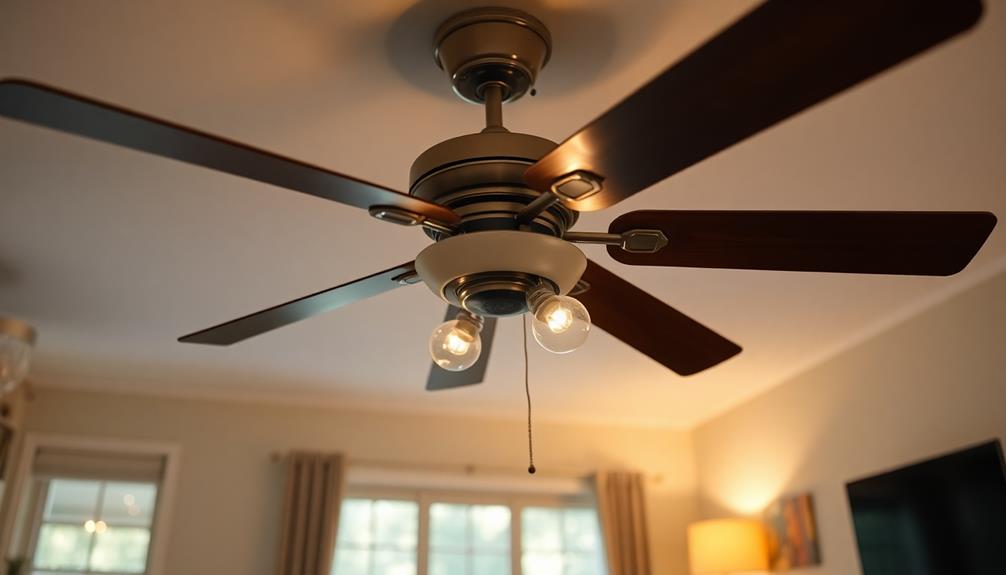
A fan spinning backward can be frustrating, but there are effective solutions to rectify the issue.
First, check the wiring connections to confirm they're correct and tight. Loose or improperly connected wires can cause reverse spinning.
Next, use the reversing switch or remote control to change the fan direction.
If the issue persists, inspect the motor and capacitor for faults, as these can affect rotation.
Finally, adjust the blade pitch according to the manufacturer's guidelines.
- Verify wiring connections.
- Utilize the reversing switch.
- Inspect the motor and capacitor.
- Adjust blade pitch.
- Schedule regular maintenance.
Frequently Asked Questions
Can Fan Direction Affect Energy Efficiency in My Home?
Yes, fan direction definitely affects energy efficiency in your home. By adjusting the blades appropriately, you can optimize airflow, reduce heating or cooling costs, and maintain a comfortable environment year-round. Regular adjustments enhance performance.
How Can I Tell if My Fan Needs Maintenance?
To tell if your fan needs maintenance, listen for unusual noises, check for wobbling, and verify it spins smoothly. Regularly inspect the blades and motor, and clean dust buildup to maintain peak performance.
What Are the Benefits of Using a Ceiling Fan Year-Round?
Using a ceiling fan year-round can enhance your comfort and reduce energy costs. In summer, it cools you down, while in winter, it circulates warm air, maintaining an even temperature throughout your space.
Do Different Fan Blade Shapes Impact Airflow Direction?
Imagine a gentle breeze on a hot summer day; different fan blade shapes can impact airflow direction considerably. By choosing the right design, you enhance cooling efficiency and create a more comfortable environment in your space.
Can Decorative Features on Fans Influence Their Performance?
Decorative features on fans can impact performance. If the blades aren't designed for ideal airflow, you might notice reduced efficiency. Always consider both aesthetics and functionality when choosing a fan for your space.
Conclusion
So, the next time you walk into a room and feel that unexpected rush of air, don't panic! You've got the knowledge to tackle a fan spinning backwards. Whether it's a simple flip of a switch or a more complex wiring issue, you can uncover the mystery behind your fan's behavior. Imagine the comfort you'll feel once you've solved the puzzle and transformed your space into the cozy haven you deserve. Ready to take control?
